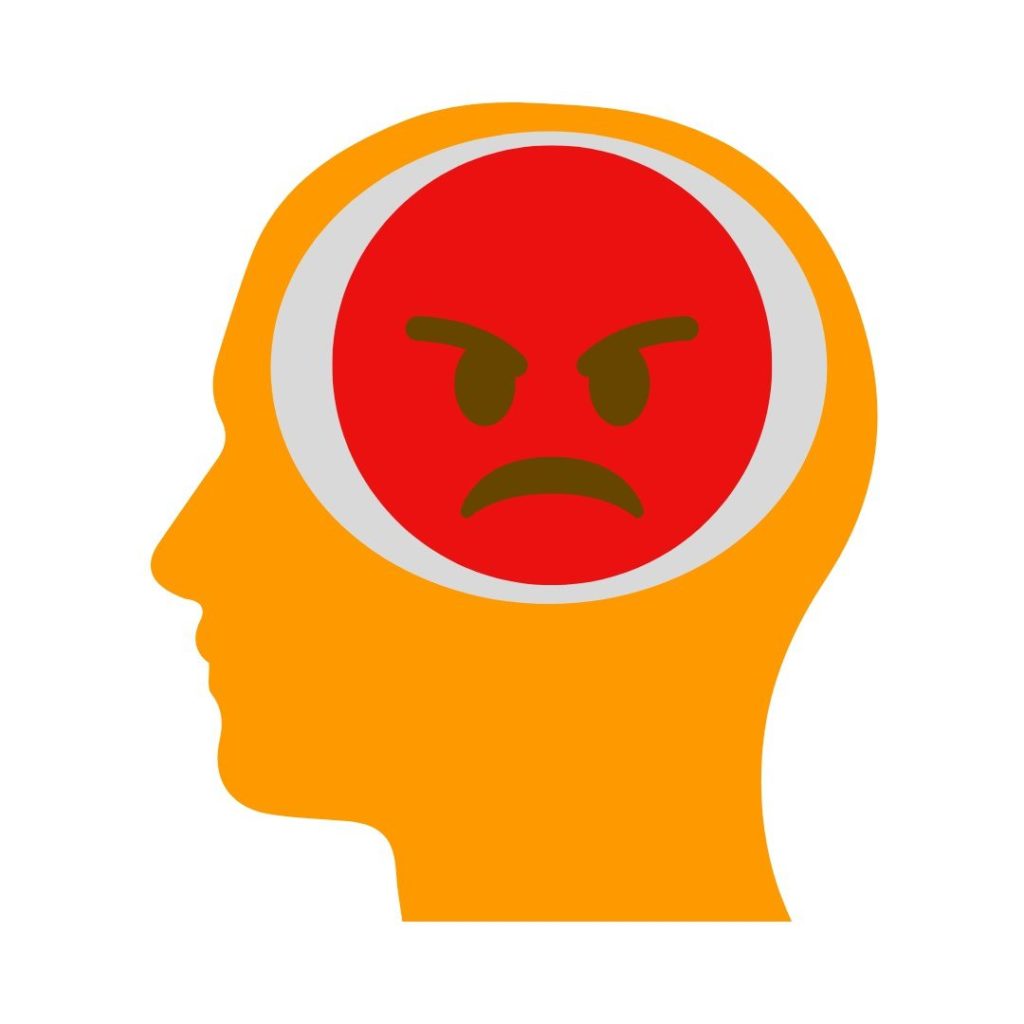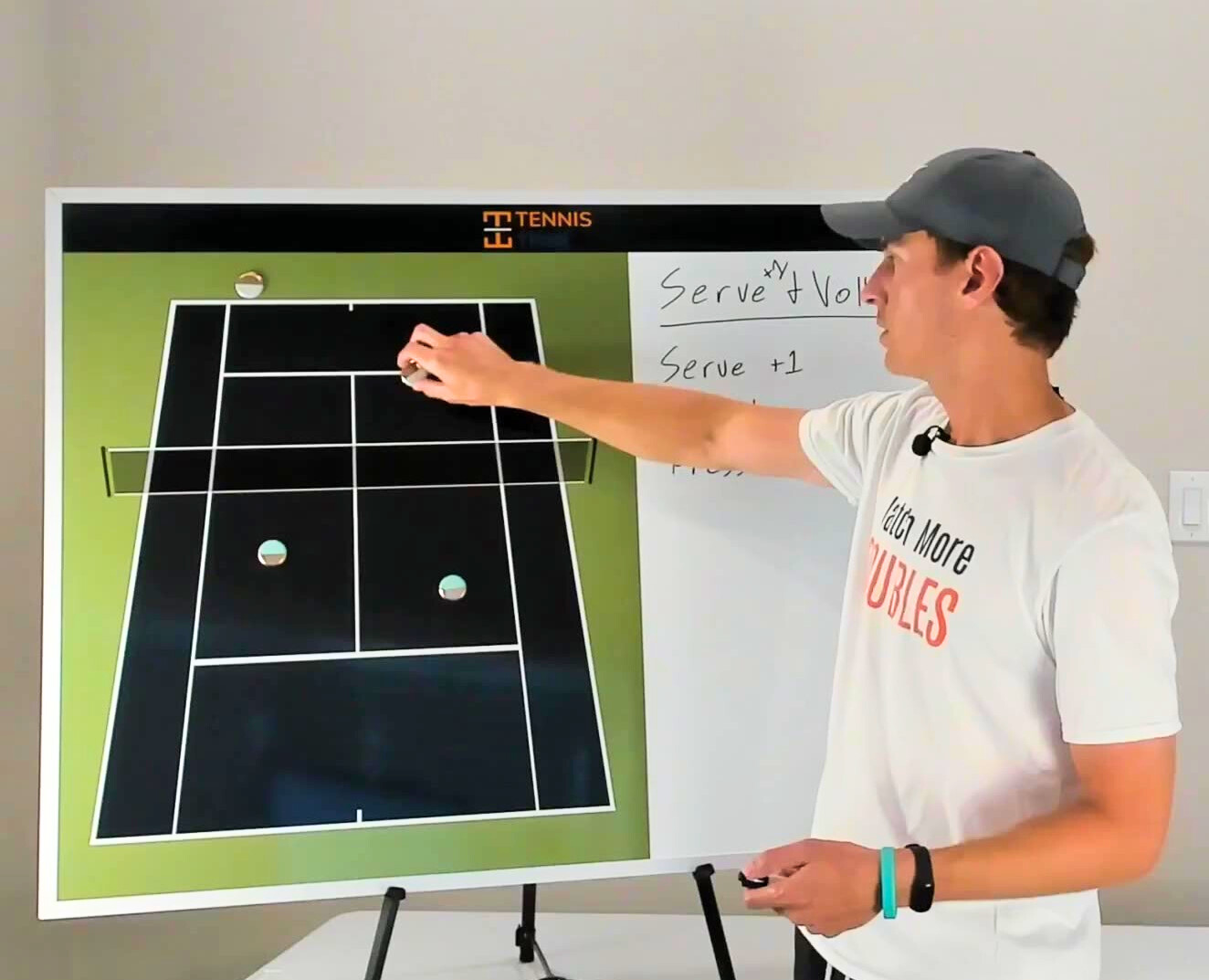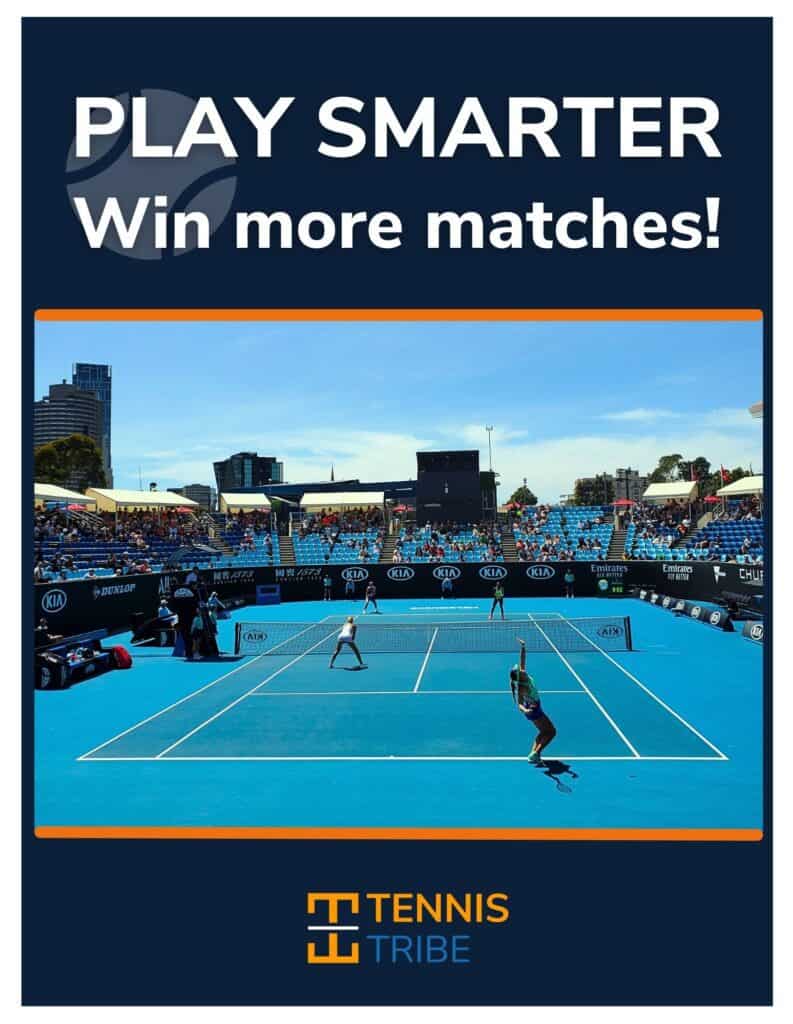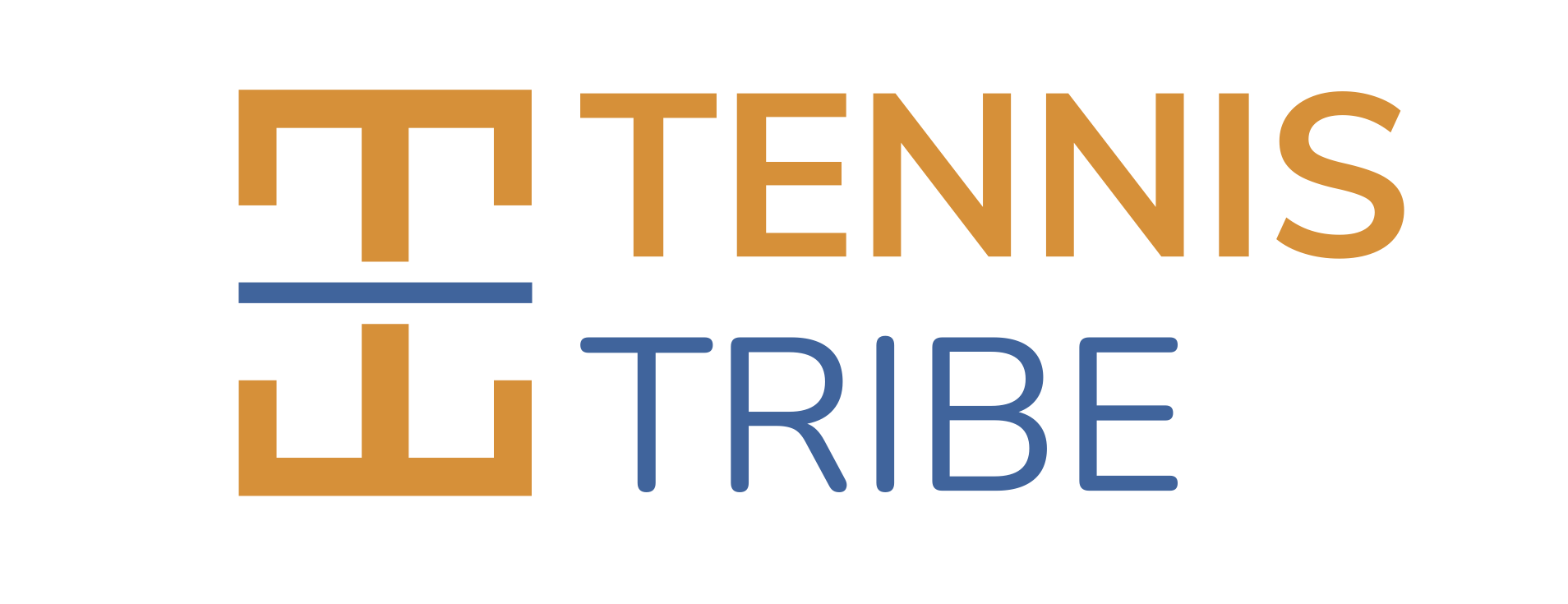Today, you’re going to learn how to make your opponents mad.
When you’re playing a tennis match, getting and keeping a mental edge over your opponent can be the difference in the match.
You’ve probably been on both sides of this fence. I know I’ve beaten players I shouldn’t because I got them to check out early in the match. Several times over the past few years, I’ve also derailed mentally after losing a big point or a tight set, never to recover.

How can we make sure we’re on the winning side of this battle more often? What can we do to break down our opponent’s confidence & make them frustrated, while still increasing our own confidence?
Below are three ways to gain the mental edge over your opponent.
Note: This is part 2 in a 3 part series on the mental side of doubles. Part 1 is here.
#1 Be Unpredictable
If you’re unpredictable, your opponents won’t be able to get into a rhythm. Their game plan might work one game or point, but not the next.
This WILL frustrate them. 😡
Here are a few ways you can be unpredictable.
Move more at the net.
In doubles, this means moving side to side, and changing your positioning.
Try poaching early one point, and give them the doubles alley. They’ll probably miss.
Then, poach late the next point. Then, fake the poach two points after that.
If you’re a singles player, practice coming into the net more often. Trying to serve and volley once per game will get you a lot of free points, and force missed returns which can drive the opponent crazy.
Change up your serving formations in doubles
Letting your opponent return crosscourt every time is a surefire way to lose to a good team. Give them different looks using the I formation, Australian formation, and conventional.
MOST POPULAR COURSE!
25 Winning Doubles Tactics
Guaranteed to help you play smarter & win more matches.
- Over 50 video doubles lessons
- 60+ ATP & WTA points analyzed
- Nearly 3 hours of strategy content

Will Boucek – ATP & WTA Doubles Strategy Analyst.
Hit a different ball.
Changing the spin, depth, height, pace, and angle of your shots will throw the opponent off.
After they get used to my low, flat return, for example, I’ll change it up with a topspin angle roll. They inevitably have trouble timing this and get angry when they miss it 🙂
Especially against good doubles teams, staying unpredictable is the best thing you can do to frustrate them and take over the momentum in a match.
#2 Charge the Net (Strap)
Try it for just one game and see what happens. Instead of hitting your usual volleys from 3-5 feet from the net, try closing in two extra steps right on top of the center net strap the first chance you get.
Here’s what will happen.
Your opponent will miss more.
When they see you crowding the net, they’ll try to hit the ball harder, and miss more often.
Although, make sure
You’ll hit more winners (off the frame).
Even if it’s a mishit volley off your frame, from that position, it’s likely going to be a winner. Mishit volley winners are a GREAT way to make your opponents angry 😉
You’ll get lobbed.
The back player should cover the lobs. Make them beat you with it a few times before you adjust. Odds are that their first lob will miss long or be left short for an overhead.
Keep using this tactic until it stops working. When it does, here’s how you beat a lobber in doubles 🙂

Win matches easier & improve faster with better, smarter tactics.
Learn Doubles from a Top 10 ATP & WTA Strategy Analyst
#3 Make Your Opponent Miss!
The absolute best way to frustrate your opponent and win the mental game is to make them miss.
Hitting a winner is great, but it’s when the other team misses a shot that the self-loathing takes place. That’s why hitting crosscourt, high-percentage, shots is such an effective strategy in doubles.
This is pretty simple actually. Just observe what shots they miss, and give them more of those. Here are a few things to look for:
- Who is the weakest player on the other side of the net?
- What is the weakest volley? Usually, a backhand volley.
- Where is each player comfortable? Baseline or net.
Attack their weaknesses relentlessly!
If I see a missed backhand return on a slow 2nd serve, I’m going to keep serving to their backhand side until they make 2-3 in a row, while adjusting pace & spin.
Follow these simple rules to start frustrating the players on the other side of the net and winning more doubles matches!
Note: This is part 2 in a 3 part series on the mental side of doubles. Part 3 is here.

Great!
Thanks Robert!
How to make your opponent mad?
Call a few foot faults.
Haha yes! I love it